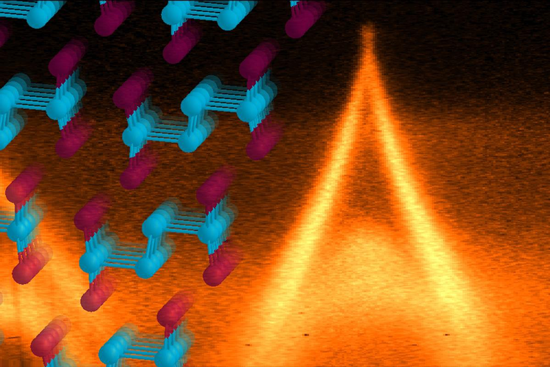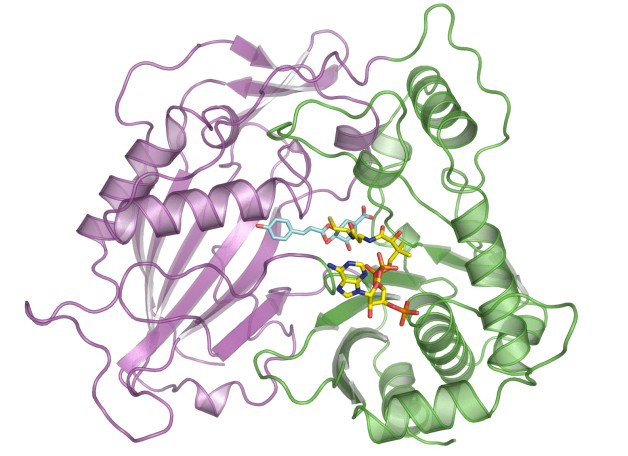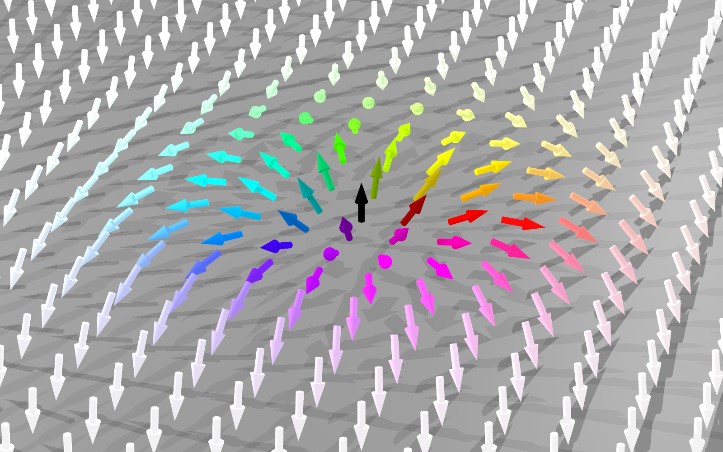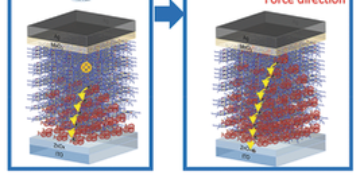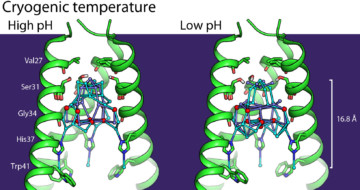To determine how a gene will function, we need to know the spatial arrangement of the genome in the nucleus. Researchers have made a significant advance in determining this 3D organization by combining modeling and probabilistic calculations with minimally perturbing imaging techniques. Read more »
Science Briefs
A Novel Quasi-1D Topological Insulator
The tantalizing prospect of energy-saving, ultralow-power electronics has led to a vigorous search for optimal topological insulator materials. Now, an international team of scientists has discovered the first of a new class of topological insulators with unique properties: quasi-1D bismuth iodide. Read more »
Understanding the Key to Henipavirus Infection
The Hendra virus was the first member of the genus Henipavirus, an emergent group of viruses with a high mortality rate. Knowledge of the protein structure that mediates Hendra entry into host cells could enable the design of antigens with improved immunogenic response. Read more »
Power-Amplified Predatory Strikes in Trap-Jaw Spiders
Using a combination of high-speed video, molecular phylogenetic analysis, and x-ray microtomography of a family of tiny trap-jaw spiders, researchers discovered that power-amplified predatory strikes evolved four times independently, once the basic trap-jaw body plan was in place. Read more »
Reducing Plant Lignin for Cheaper Biofuels
Scientists have identified and validated a novel approach to reducing lignin in plants by tweaking a key lignin enzyme. Their technique could help lower the cost of converting biomass into carbon-neutral fuels to power cars and other sustainably developed bio-products. Read more »![]()
Driving Skyrmions Along a Racetrack
Researchers have demonstrated the ability to generate stable skyrmion lattices and to drive trains of individual skyrmions by short current pulses along a magnetic racetrack at speeds exceeding 100 m/s, as required for spintronic applications. Read more »
Missing Oxygen Atoms Are Key to Robust Spintronic Material
Researchers studied In2O3:Fe, a promising spintronic material, to determine what leads to its surprisingly robust magnetic properties, how to optimize it, and what to look for in other candidate spintronics materials. Read more »
Superlattices Patterned by Polymers
Scientists have shown that self-assembled superlattices, made up of nanoparticles with polymer chains grafted onto their surfaces (“hairy nanoparticles,” or polymer “brushes”), can be tailored to exhibit desired characteristics for applications ranging from nano- to biotechnology. Read more »
On the Way to Unlimited Energy
With the help of four different ALS beamlines, scientists were able to understand and improve the morphology of the main device structure in organic photovoltaic cells. Read more »![]()
Improving Anti-Influenza Medications
Protein crystallography at ALS Beamline 8.3.1 helped scientists understand the M2 proton-channel structure from the influenza A virus, an understanding that is needed to design better anti-influenza medications. Read more »
- « Previous Page
- 1
- …
- 18
- 19
- 20
- 21
- 22
- 23
- Next Page »

